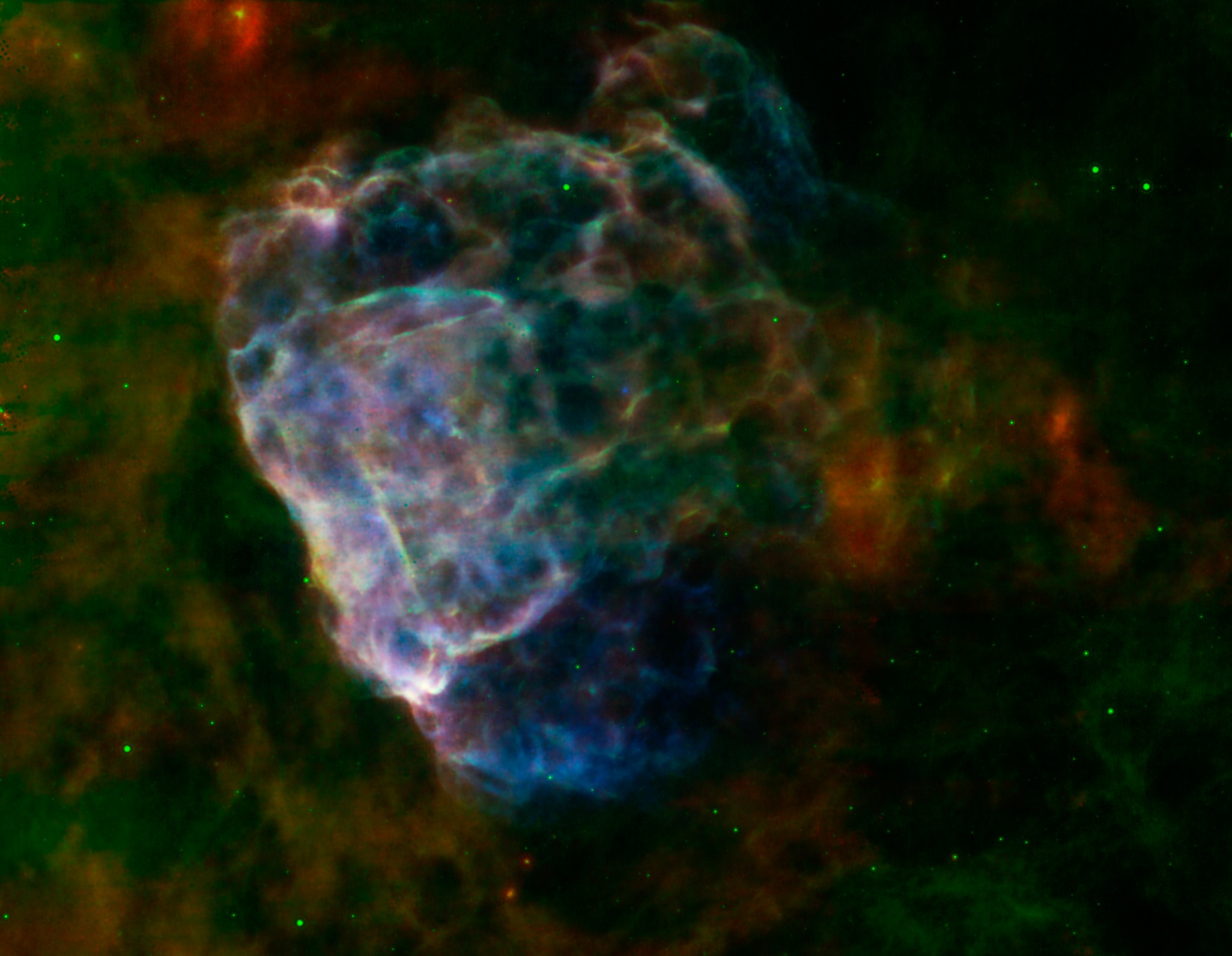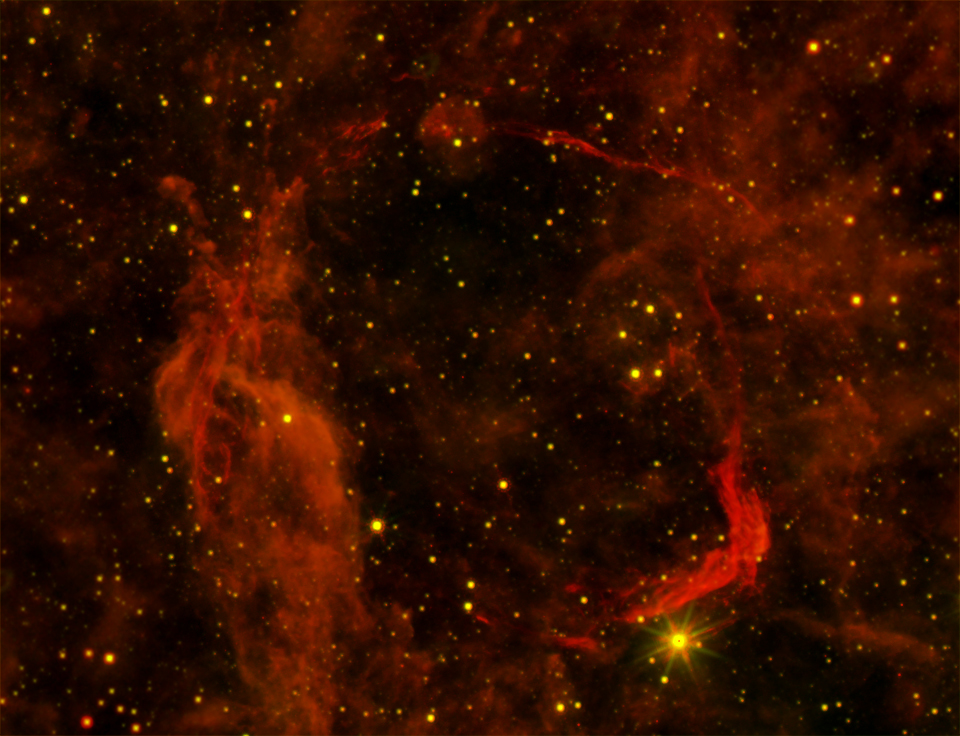Supernova remnants are interesting as astro-archeological finds in the sky. Finding supernova remnants in the sky is a bit like finding shards of broken pottery from previous civilizations in the ground.
I like this portrait of the Galactic center from the MeerKAT radio array in South Africa ( and I hope I get to keep the picture):
Interesting, isn't it? "SNR" means supernova remnant. So as you can see, there are several supernova remnants in the Galactic core.
As for today's APOD, I'm slightly surprised that the remnant is
so tattered and so apparently close to "disintegration", in view of the fact that the supernova remnant is not
that old, less than 2,000 years. Don't they last longer than that? But perhaps this supernova remnant is located in a "busy" part of the Milky Way, where there are many large molecular clouds and heavy stellar traffic to tear the hapless supernova remnant asunder? But its environment in today's APOD looks kind of uneventful.
The supernova remnant is remarkably asymmetrical:
Anyway. RCW 86 is the remnant of a type Ia supernova. The progenitors of these supernovas are made of "prime fuel" through and through, because their cores are made of lighter-than-iron elements that can be used to extract energy through fusion. That's why these supernovas leave no neutron stars behind, because the progenitor stars are like huge solar mass thermonuclear bombs

waiting to explode

under the right circumstances. (The progenitor stars of core-collapse supernovas, by contrast, have "dead" iron cores that can't be used for fusion, and it is these cores that turn into neutron stars or occasionally black holes in the supernova explosion.)
Anyway, today's APOD gives me a chance to post a picture that I have wanted to post for a long time:
Does this supernova remnant, Puppis A, look like a dead astronaut floating in space? You bet it does! And it is fitting that it should look like a dead astronaut, too, because a supernova remnant is like a "dead star floating in space".
Puppis A is interesting in itself:
Spitzer Caltech wrote:
The destructive results of a mighty supernova explosion reveal themselves in a delicate blend of infrared and X-ray light, as seen in this image from NASAs Spitzer Space Telescope and Chandra X-Ray Observatory, and the European Space Agency's XMM-Newton.
The bubbly cloud is an irregular shock wave, generated by a
supernova that would have been witnessed on Earth 3,700 years ago. The remnant itself, called Puppis A, is around 7,000 light-years away, and the shock wave is about 10 light-years across.
Yeah? Puppis A supernova would have been witness by humans 3,700 years ago, but its remnant is still, well, "going strong". But the RCW 86 supernova remnant in today's APOD looks definitely worse for wear, even though it is only half as old as Puppis A. What gives?
Maybe the answer is that RCW 86 was photographed in visible light, but Puppis A was imaged in infrared light and X-rays?
Ann
 RCW 86: Historical Supernova Remnant
RCW 86: Historical Supernova Remnant



